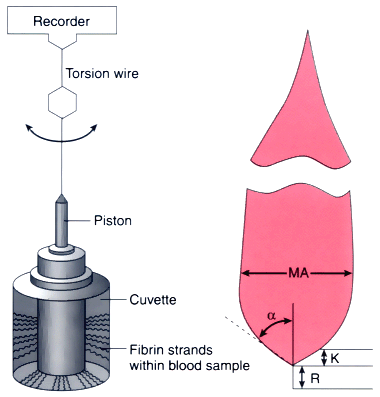Figure 32-53
The functional components of the thromboelastograph consist
of a rotating cuvette, a suspended piston attached to a torsion wire, and a recorder.
As the blood sample clots, rotation of the cuvette is transferred to the torsion
wire and translated by the recorder as a characteristic tracing. Quantitative parameters
derived from the thromboelastograph trace are the reaction time (R), the BiKoatugulierung
value or coagulation time (K), the alpha angle (α), and maximum amplitude (MA).
See the text for greater detail. (Redrawn from Tuman K, Speiss B, McCarthy
R, et al: Effects of progressive blood loss on coagulation as measured by thromboelastography.
Anesth Analg 66:856, 1987.)

